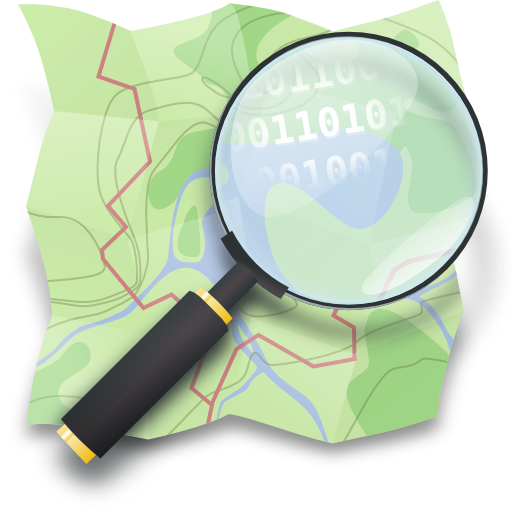pootriarch
a beautiful robot, dancing alone · showgirls über alles: kylie, angèle · masto · last.fm · listenbrainz · https://www.lovekylie.com/keyoxide
- 5 Posts
- 17 Comments

 2·9 months ago
2·9 months agothe pictured streetcar is a half-block from the railway museum, just out of frame to the right. they even have a ‘field guide’ for spotters: https://ramblingreaders.org/book/374078/s/on-track

 4·10 months ago
4·10 months agoI have the Multiling keyboard. I don’t recommend it to others as it’s rather long in the tooth and still has quirks I haven’t fully sorted. I keep it precisely because it does multi-language support with separate dictionaries; I switch it between U.S. English and French Canadian and autocorrect follows. It’s massively customizable but I don’t understand it and am more likely to render it unusable than to make it better.
Prerequisites
- Internet-facing web server with reverse proxy and domain name (preferably SSL of course)
- Server behind the reverse proxy with Rust environment
Installation
- Don’t bother downloading the source code to your server; installing it that way gives you a big debug executable
- Instead just
cargo install mollysocket - Move the
mollysocketexecutable if desired - Run
mollysocketonce so that it will emit the default config
Configuration
- Fish the config file out of
.config/mollysocket/default-config.tomland copy it somewhere.
config.toml
- In the new file, replace the
allowed_endpointsline withallowed_endpoints = ['*']. The default 0.0.0.0 config appears to be a bug; this setting controls access to endpoints within the app, not IPs from outside. Leaving the original value causes mollysocket to reject everything. - Put a proper path in the
db = './mollysocket.db'line rather than just having it land wherever you’re sitting. - Delete the
mollysocket.dbthat was created on first run (even if it’s already where you’re intending to put it). This is just to make sure the web server creates it and has the correct permissions.
Run script
- The environment variable ROCKET_PORT must be set or the server will sit and do nothing. It’s best to create all of the environment variables mentioned in the README, whether that is in a user profile script or in a shell script that wraps startup. You can change any of these values, but they must exist.
-
export ROCKET_PORT=8020 export RUST_LOG=info export MOLLY_CONF=/path/to/your/config.toml
Proxy server
- You’ll need to proxy everything from
/to your mollysocket server and ROCKET_PORT. - Exclude anything that you may need served from your web server, such as .well-known.
Things to know
- I get this warning on startup: “Forced shutdown is disabled. Runtime settings may be suboptimal.”
- I also can’t stop my server with any sane signal; only SIGKILL brings it down.
- Some discussion here: https://github.com/SergioBenitez/Rocket/discussions/1880
deleted by creator
you probably already found this, but for others who might be curious:
in the settings if you change notification method from websocket to unified push, the UP settings come up, including a server address (which is what they intend to be used) or some air gap mode that i can’t find documented

 3·2 years ago
3·2 years agoi’m shopping for mp3 players for precisely this reason - a friend has an ipod touch that abruptly stopped scrobbling. the last.fm app is stuck in a loop sucking battery. and she needs bluetooth anyway. she has always kept music and phone separate but now we have to ask the five whys on that before getting her a new unfamiliar gadget.

 1·2 years ago
1·2 years agopart of humans learning to drive safely is knowing that flouting traffic laws increases your chance of being stopped, fined, or if you’re not the right demographic, worse things. we calibrate our behavior to maximize speed and minimize cops, and to avoid being at-fault in an accident, which is a major hit to insurance rates.
autonomous vehicles can’t be cited for moving violations. they’re learning to maximize speed without the governor of traffic laws. in the absence of speed and citation data, it’s hard to measure how safe they are. there is no systemic incentive for them to care about safety, except for bad press.

 3·2 years ago
3·2 years agoagain not foss so won’t dwell at length — but i use fund manager from beiley software. commercial, but works double-entry and handles more investment complexity than a human could ever need. windows app, i run it under wine on linux and crossover on mac. (i don’t own a windows box — that’s how irreplaceable it was for me.)

 1·2 years ago
1·2 years agoso per wikipedia and confirmed at MDN, firefox is the only major browser line not to consider certificate transparency at all. and yet it’s the only one that has given me occasional maddening SSL errors that have blocked site access (not always little sites, it’s happened with amazon).
i don’t understand how firefox can be simultaneously the least picky about certificates and the most likely to spuriously decide they’re invalid.

 1·2 years ago
1·2 years agowell i feel stupid now for not doing the obvious. but…
Blocked Page
Your organization has blocked access to this page or website.
on the PPA box, this is what it showed me (meanwhile it was attempting to connect to incoming.telemetry.mozilla.org). another symptom of displaying respect for enterprise policies but in fact ignoring them. (as i had mentioned, on this box all of the settings look locked down as they should be, but it’s still attempting to send telemetry.)

 51·2 years ago
51·2 years agothanks, i’ll look again. it’s not that i love the idea of being fingerprinted; i just think that five mylar bags, four tin hats and a partridge in a pear tree won’t save me from that. i need my password manager, and once that’s in, enforcing a generic screen is silly - cow’s out of the barn. but not having the arms race against pocket and telemetry would be a big bonus.

 72·2 years ago
72·2 years agoi did try that but the never-dark mode blinded me. i understand the reasoning, but absolute anonymity isn’t my own threat model; i’d like to be able to use themes and resize the window

 2·2 years ago
2·2 years agoan interesting oddity: on my non-rooted xperia, signal thinks that i don’t have play services and so it falls back to… polling. every five minutes. killing my battery and my logs.
i had to put signal into the restricted battery group, which means no notifications. i anxiously await the new molly, as i already have a unified push environment. it looks like the migration will be a bit delicate.

 4·2 years ago
4·2 years agoneo store refuses to run if you don’t grant it the right to send notifications and bypass battery optimizations. if an app demands a permission and doesn’t have a plausible explanation why it needs it, i don’t keep it :/

 2·2 years ago
2·2 years agoimo magic earth is a navigation app, full stop. it does that amazingly well, including live traffic, but i wouldn’t use it for anything else. organic maps is a better general-purpose map but isn’t a patch on magic earth for nav.

 4·2 years ago
4·2 years agoIt exists, it’s called a robots.txt file that the developers can put into place, and then bots like the webarchive crawler will ignore the content.
the internet archive doesn’t respect robots.txt:
Over time we have observed that the robots.txt files that are geared toward search engine crawlers do not necessarily serve our archival purposes.
the only way to stay out of the internet archive is to follow the process they created and hope they agree to remove you. or firewall them.


yes, you’re right on both counts. i lose today :(